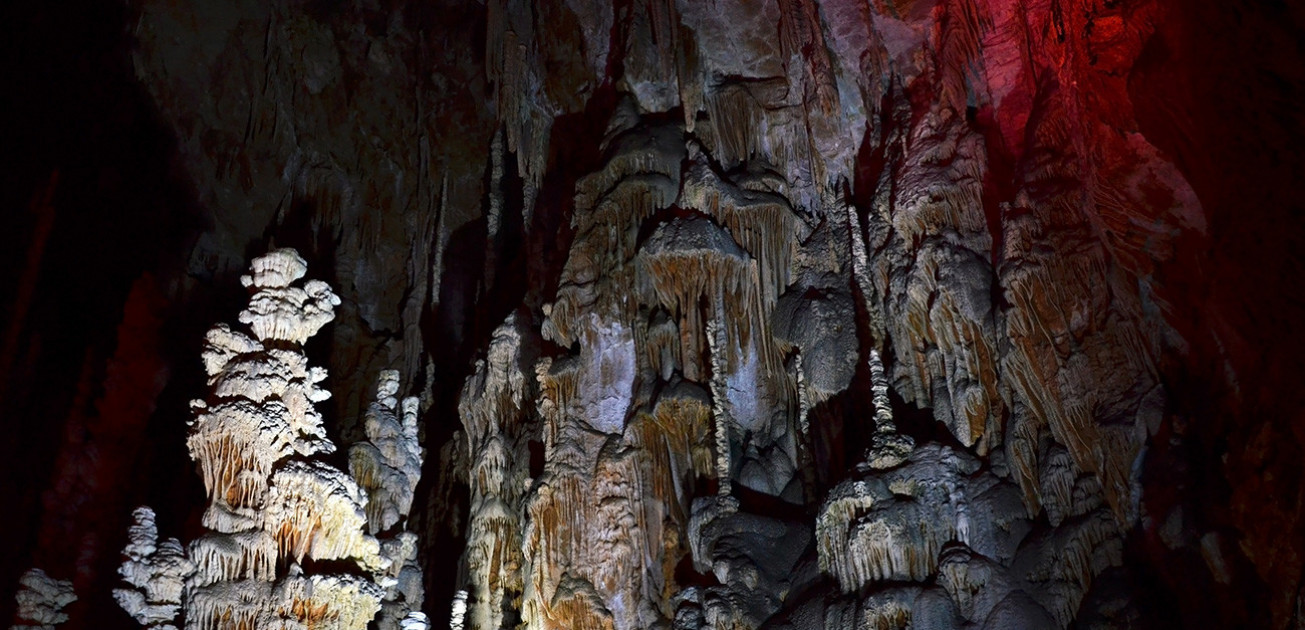


"Our world’s caves are places of wonder, mystery and majestic beauty. Show caves around the world are embracing their role in protecting and preserving caves and providing a place for people to learn about these special, natural, cultural and historical resources.
Show caves also play another important nature tourism role of sustainable economic development, providing jobs, and helping the economy of their regions.”
| Resource name: | 6th ISCA Congress Proceedings (Full version - for members) |
|---|---|
| Type of resource: | Proceedings |
| Author(s): | |
| Keywords: | ISCA congress, proceedings |
| Category: | |
| Page from: | 1 |
| Page to: | 207 |
| Publication: | ISCA 6th Congress Proceedings |
|---|---|
| Published in: | Slovakia |
| Year of publishing: | 2011 |
| Number of pages: | 200 |
| Editor: | Pavel Bella, Peter Gazik |
| Publisher: | SNC of Slovak Republic, Slovak Caves Administration |
| ISBN: | 978-80-89310-59-3 |
Contents
Congress Work
ISCA 6th Congress 2010 Organization .......................................................................................... 5
Congress Programme ................................................................................................................... 6
ISCA General Assembly 2010 Agenda ........................................................................................... 9
Report to the ISCA General Assembly by ISCA President ............................................................ 10
Secretary Report – General Activities – Financial Statements .................................................... 18
Minutes of the ISCA General Assembly 2010 .............................................................................. 24
Papers and Extended Abstracts
P. Bosák: Dating of Processes in Karst and Caves: Implication for Show Caves Presentation ..... 34
D. Cove: The Essential Role of Interpretive Guiding in Ensuring Understanding
and Conservation of Caves and Karst .......................................................................................... 42
B. Debevc, M. Knez, A. Kranjc, M. Prelovšek, A. Semeja, T. Slabe: Preliminary Proposal
for the Project »Heaven´s Cave« (Vietnam) Adaptment for Tourist Purposes ........................... 47
K. Dvorščak: Model of Developing Competences of the Show Cave Guides and
a System of Permanent Mentorship (Postojna Cave, Slovenia) .................................................. 52
A. Fabbricatore: The New Electrical System of the Grotta Gigante: Compliance with the Laws
in Force and Lighting Study – The Grotta Gigante as a Tourist and Scientific Centre ................. 62
A. Fabbricatore: Associazione Grotte Turistiche Italiane (A.G.T.I.) ............................................. 71
A. Fabbricatore, M. Garavaglia, C. Giovani, L. Piccini, F. Cucchi, L. Zini: Radon
Concentration Trend in a Tourist Cave (Grotta Gigante, North-East Italy) ................................. 74
R. Gál: WISKI – World Wide Used Environmental Monitoring System ....................................... 75
V. Giannopoulos, E. Kambouroglou, S. Kontaxi: Towards a Network on the Development and Protection
of the Caves of Archaeological and Paleontological Interest in the Island of Crete ....................... 82
M. Korzystka, J. Piasecki, T. Sawiński, J. Zelinka: Climatic System of the Dobšinská Ice Cave...... 85
M. Kržič: Preservation of Cave Floor and its Importance for Interpretation ............................... 98
Ł. Lewkowicz: Cave Tourism in the Polish-Slovak Transfrontier Area ........................................ 100
H. A. S. Lobo, J. A. de Jesus Perinotto, P. C. Boggiani: Tourist Carrying Capacity
in Caves: Main Trends and New Methods in Brazil .................................................................... 108
J. Marikovičová, J. Omelka, D. Haviarová, P. Gažík, J. Zelinka: Integrated Cave
Environmental Monitoring System (ICEMS) ............................................................................... 116
N. Martínková: Is White-Nose Syndrome a Threat for Bats in European Caves? ....................... 124
J. Mulec, S. Glažar: First Results on Use of a Hydrogen Peroxide Solution in Postojnska
Jama (Slovenia) to Remove Lampenflora .................................................................................... 128
Ľ. Nudzíková: Foundations of the Slovak Caves Administration Marketing Strategy...................132
I. Smetanová, K. Holý, D. Jurčák, J. Omelka, J. Zelinka: Radon Monitoring in Domica
Cave, Slovakia – Preliminary Results ........................................................................................... 136
M. Soják, P. Fecko: The Most Important Open Speleoarchaeological Sites in Slovakia .............. 141
A. Spate, K. Henderson, D. Cove, G. Martin: The Australasian Cave and Karst Management Association Inc:
A Trans-National Organization of Show Caves, Managers, Guides, Scientists and Cavers ...............153
P. Štefin, K. Dvorščak: Key Success Factors of Postojna Show Cave Development
in its 192 -Year-Long History of Tourism ....................................................................................... 164
Zs. Tolnay: Interpretation in Cave Tourism – A Little Utilised Management Tool ......................... 172
Congress Participants and ISCA Members
ISCA 6th Congress Participants List ................................................................................................ 177
ISCA Full Members by Continents and Countries ............................................................................ 181
ISCA Membership – Contacts – e-mails ........................................................................................... 189
Appendix 1
A. Cigna: The Problem of Lampenflora in Show Caves ...............................................................201
Appendix 2
J. Darricau: The International Commission on Prehistory in Show Caves ..............................206